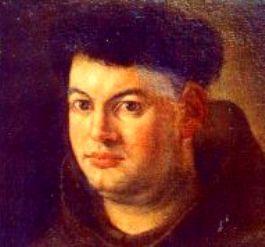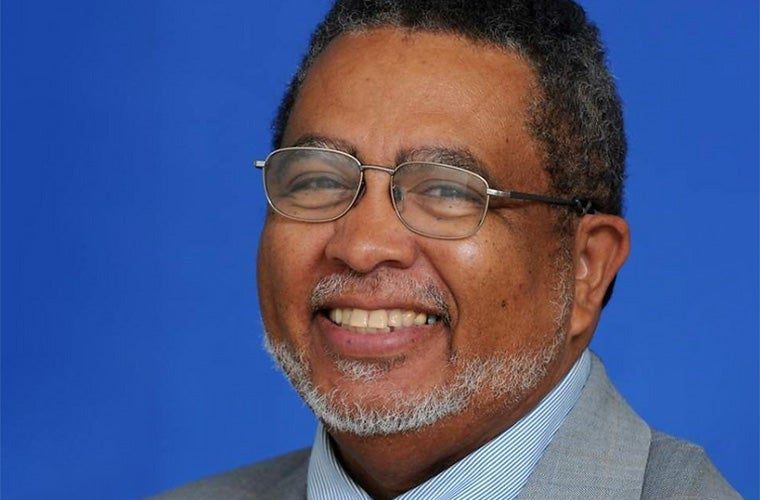NCMEA 2024 Program Notes & Composer Bios
Wind Ensemble
PEQUENA SUITE PARA BANDA| Luis Serrano Alarcón
Born in Valencia in 1972, Luis Serrano Alarcón is a Spanish composer and conductor. His works have been performed in more than 30 countries. He has been invited to conduct his own music in Spain, Italy, Singapore, USA, Colombia and Hong Kong and has received commissions from important national and international organizations and groups, including the Valencian Institute of Music, the International Band Competition of Vila d’Altea, the CIBM of Valencia, the CIM La Armónica of Buñol, the University of Saint Thomas (Minnesota), the Philharmonic Winds (Singapore) and the Hong Kong Band Directors Association. He is currently principal conductor of the UMSC Symphonic Band of Villar del Arzobispo (Valencia) and professor at the Conservatorio Superior de Música of Valencia.
Pequeña Suite para Banda was composed in 2008 in a moment where, after the exhausting effort of composing his work for double symphonic band entitled Las Hijas de Eris (The Daughters of Eris), the author needed to write something light and less ambitious in a structural sense. The result was this 12-minute piece set in four brief movements: Intrata, Vals (Waltz), Nana (Lullaby) and Galop. The relaxed –and even humorous– character that permeates the composition is influenced greatly by composers such as Jean Françaix, Nino Rota and Shostakovich, and other obvious influences come from the chamber music works of the 19th and early 20th centuries.
D’UN MATIN DE PRINTEMPS | Lili Boulanger
Lili Boulanger (1893-1918) was born into a musical family in the Parisian suburbs during a period of intense musical development in France. The younger sister of renowned composer and teacher Nadia Boulanger and the daughter of Prix de Rome winner Ernst Boulanger, Lili showed a natural aptitude for music and composition at an early age. At the age of only 19, she won the Prix de Rome, becoming the first woman to do so. Sadly, her life was cut short by chronic illnesses that had plagued her since her childhood, prematurely ending what seemed to be a promising career.
D’un matin de printemps (Of a spring morning) was composed shortly before Boulanger’s death in 1917. Originally written for violin and piano, Boulanger created a version for full orchestra several months later, showing off her talents of exacting and vivid and vibrant colors, and creating a variety of textures that range from soloistic to sonorous. This transcription for wind ensemble was created by Jack Hontz.
THE LITTLE SPARROW | Julie Giroux
Julie Ann Giroux was born 1961 in Fairhaven, Massachusetts, and raised in Phoenix, Arizona, and Monroe, Louisiana. She received her formal education from Louisiana State University and Boston University. She studied composition with John Williams, Bill Conti and Jerry Goldsmith, to name a few. Giroux is an accomplished performer on piano and horn, but her first love is composition. She began playing the piano at the age of three and had published her first piece at the age of nine.
In 1985, she began composing, orchestrating, and conducting music for television and films. She received her first Emmy nomination in 1988 and over the next three years was nominated each year for her arranging and original compositions for the Academy Awards show. To date, Giroux has well over 100 film and television credits and has been nominated for an Emmy several times. When she won her first Emmy Award, she was the first woman and the youngest person ever to win the award in that category. Giroux has also been privileged to arrange for Celine Dion, Paula Abdul, Dudley Moore, Liza Minnelli, Madonna, Reba McEntire, Little Richard, Billy Crystal, Michael Jackson and many others.
Giroux is an extremely well rounded composer, writing works for symphony orchestra (including chorus), chamber ensembles, wind ensembles, soloists, brass and woodwind quintets and many other serious and commercial formats. She began writing music for concert band in 1983; since that time, she has composed and published numerous works for professional wind ensembles, military bands, colleges and public schools and has conducted her music in clinics worldwide. She is also a very well received speaker and clinician. Giroux is a member of the American Bandmasters Association and the American Society of Composers, Authors, and Publishers (ASCAP).
About The Little Sparrow, Giroux writes:
Watching birds is one of my favorite pastimes. I have many bird feeders and watch them every day. The sparrows are my favorites. No flashy plumage, nor spectacular songs, but still my favorites. I wonder where they sleep at night. They seem so frail yet they thrive and endure the worst of weather. No matter how much noise is around me, it feels like I am watching them in complete silence. Their presence is calming and solefully beautiful. While I was composing this work, I was reminded of this poem. And now, this poem reminds me of this music.
“Only A Little Sparrow” (Author unknown)
I’m only a little sparrow, A bird of low degree;
My life is of little value, But Jesus cares for me.
I just fold my wings at nightfall, Wherever I happen to be;
For He is always watching, And no harm can happen to me.
I am only a little sparrow, A bird of low degree;
At Night I peacefully Slumber, Because Jesus cares for me.
CONCERTINO FOR THREE BRASS | Floyd Werle
Floyd Edwards Werle was an American composer and arranger. He was chief arranger for the U.S. Air Force Band for 17 years. In 1967, he began a career as director of music at the Faith United Methodist Church in Rockville, Maryland. Werle has many band arrangements to his credit, and his original works, while large and important in scope, were written with the enjoyment of both listener and player in mind.
Concertino for Three Brass features solo trumpet, trombone, and bass trombone and includes a variety of rhythms, harmonic content, melodic lines, and dynamics. The work has been compared to Kurt Weill’s Threepenny Opera, including a sense of sarcasm throughout. The first movement, “Vintage Fox Trot,” begins with trio alone exchanging technical and legato parts. The calm middle movement, “Lullaby,” is followed by “Greek Dance,” a fast 7/8 movement which provides an energetic, climactic conclusion.
- Program note by Norman E. Smith
“SOUL” from CONCERTO FOR WIND ENSEMBLE | Kevin Day
Kevin Day (b. 1996) is an award-winning, multi-disciplinary composer, jazz pianist and conductor. Day’s work is known as a vibrant exploration of diverse musical traditions from contemporary classical, jazz, R&B, Soul and more. A unique voice in the world of classical music, Day takes inspiration from a broad range of sources, including romanticism, late 20th century music, jazz fusion and gospel. Across all areas, his work explores the complex interplay of rhythm, texture and melody across genres.
“After several fruitful conversations with Dr. Cynthia Johnston Turner, director of bands at the University of Georgia, the concept for the Concerto for Wind Ensemble began to take form,” Day writes. “We had talked about doing a potential commission for the UGA Hodgson Wind Ensemble, and ultimately the conversation led to the idea of doing a substantial work to further the wind band repertoire. I knew off bat that I wanted to write something that reflected my upbringing as a young Black man and the musical culture that I grew up in, which hasn’t always been represented in concert band music.
My experience and the inspiration for this work come from a world of various intersections. My father, born in West Virginia, was a hip-hop producer in the late 1980s who worked in Southern California, and my mother (also from West Virginia) was a gospel singer. During my childhood, I grew up listening to hip-hop, R&B, jazz, and gospel music. Simultaneously, I was learning classical music through playing in band, and later orchestra. I was playing jazz and gospel music on piano, while also playing classical music on euphonium and tuba. This dual learning environment had a huge impact on my musicianship and my development as a composer. While these words had been separated in my head when I was growing up, in this work I intentionally wanted to merge them together in new fusions, paying homage to my parents, the culture I grew up in, and to the wind band world.
What came from this concept is this Concerto for Wind Ensemble, a five-movement work for band that is my most ambitious composition to date, and a work that took almost two years to compose. The movements entitled Flow, Riff, Vibe, Soul, and Jam reflect the various musical styles that I have been immersed in. Vibe and Soul are specifically dedicated to my parents, without whom I could not have made it this far. I am immensely grateful to Dr. Turner and to the consortium members of this work, who believed in my vision and sought to bring this work to life. I’m happy to share this contribution and love letter to the wind band and to the culture.”
A HORNET’S NEST | Henry Dorn
Interlacing lived experiences with innate passion, Henry Dorn is a nationally recognized music composer/conductor known for his energizing rhythm, syntax versatility, and passion for creating storytelling sounds with larger picture meanings. Dorn’s compositions encompass intimate narratives often told from the lens of being a musician and an African American. He is passionate about developing immersive experiences while setting an example of his life signature – the path may not always be smooth or clear, but it will always be worth it. His works have earned him recognition and performances by distinguished ensembles across the country, including the Minnesota Orchestra, Detroit Symphony Orchestra, the Atlanta Symphony Orchestra, the Grammy-winning Harlem Quartet, Aizuri Quartet, Argento Ensemble, and the Dallas Winds.
Dorn is on the faculty of St. Olaf College in Northfield, Minnesota, as Assistant Professor of Conducting and Composition and serves as Director of the St. Olaf Band. Originally from Little Rock, Arkansas, his ardency toward composing sparked at an early age while he was surrounded by the blues and the sounds of his father’s vinyl records collection. He earned a Bachelor of Music in Composition from The University of Memphis, a Master of Music in Composition and Wind Conducting from Peabody Institute of The Johns Hopkins University, and Doctor of Musical Arts degrees in Conducting and Composition from Michigan State University.
A Hornet’s Nest is a one movement piece divided into unique sections, each representing the history and culture of Charlotte. About the work, Dorn writes:
The city of Charlotte, North Carolina, has a rich and diverse history, which is the subject of this work. This composition considers Charlotte’s past, starting with the Catawba Nation, on whose ancestral lands the present municipality stands, and concludes with the continued “New South” spirit of the University of North Carolina at Charlotte, the institution that made this composition possible.
Modern-day Charlotte, known as the “Queen City,” was first incorporated in 1768. Named after Queen Charlotte (Charlotte of Mecklenburg-Strelitz), settlers established the city on Catawba tribal lands. A key event in its history is the Mecklenburg Declaration of Independence from 1775, which challenged British authority before the signing of the official U.S. Declaration of Independence the following year. During the American Revolution, Charlotte became a focal point of resistance, with General Cornwallis of Great Britain famously labeling it a “hornet’s nest of rebellion.” In the 19th century, Charlotte grew as a major railroad junction and a center for trade, particularly after the discovery of gold in 1799. The city evolved post-Civil War, shifting from agriculture to manufacturing, especially textiles, aided by the Southern Railway. Culturally, Charlotte became a music hub and home of WBT – the South’s first radio station – which drew gospel and country artists from throughout the country. Today, Charlotte’s “Uptown” area reflects its unique geography and has seen rapid population growth and cultural diversity. The city continues to blend its historical roots with modern challenges and opportunities, aiming to be a welcoming community for all.
The opening moments of this work, while not a direct quote of any music reverenced by the Catawba Nation, pay respect and homage to their culture and heritage through flute and drum music. The melody is a variation on a well- known folk and gospel song, “I Am a Poor Wayfaring Stranger.” These humble beginnings give way to the 18th-century settlement and incorporation of Charlotte and the significance of the Mecklenburg Declaration of Independence (Meck Dec) and Charlotte’s role in the American Revolutionary War (A Hornet’s Nest). The following quicker section highlights the region’s economic boom brought on by the first significant gold rush in U.S. history and the advent of major railway lines connecting Charlotte to Columbia, South Carolina. The sounds of country music and Piedmont blues color this section, which features another familiar folk song popularized in North Carolina – “Black is the Color of My True Love’s Hair.” Among the most well-known recordings of this work is one made famous by Nina Simone, who was born in Tryon, North Carolina, and championed the song as a part of her repertoire.
The music calms to a more reverent space, Gospel (Good News), centered around “I Am a Poor Wayfaring Stranger.” This section considers the Old South past, the consequences of the American Civil War, and the industrialization that gave way to the “New South.” The returning fast music brings the listener back to “Uptown” Charlotte and the cultural boom of the 20th century before giving way to a more modern “New South” and the imprint of UNC Charlotte (and the music of its alma mater) on the greater Queen City community.
HENRY DORN CONSORTIUM for new grade V and grade III works: This project creates two works that can be performed independently or together as a collaborative experience. Please find information about this new piece, the grade III companion piece, and opportunities to join our unique consortium here.
University Chorale

Moses Hogan (1957-2003)
Moses Hogan was born in New Orleans, Louisiana on March 13, 1957. Hogan manifested his musical talent at a young age. He anticipated the sound of church bells and guided his uncle Edwin Hogan’s choir by waving his hands as they sang. He was a graduate of the New Orleans Center for Creative Arts (NOCCA) and Oberlin Conservatory of Music in Ohio, and he also studied at New York’s Juilliard School of Music and Louisiana State University in Baton Rouge. Throughout his life, Hogan created a number of new original arrangements of classic spirituals and formed several choirs, such as the Moses Hogan Singers and the Moses Hogan Chorale. He also served as editor of the Oxford Book of Spirituals.
Hogan is considered the world’s greatest arranger of spiritual music. His contemporary settings of spirituals, original compositions and other works have been admired by audiences and commended by critics worldwide. His arrangements are still being used as the foundation for high school, college and university choirs today.

Lodovico da Viadana (1560-1627)
Lodovico Grossi da Viadana was an Italian composer, teacher, and Franciscan friar of the Order of Friars Minor Observants. Holding positions as choir master at various cathedrals in Italy, he was a prolific composer of choral works. In his Cento concerti con il basso continuo (1602) Viadana was the first significant figure to make use of the newly developed technique of figured bass, one of the musical devices which was to define the end of the Renaissance and beginning of the Baroque eras in music.

Adolphus Hailstork (b. 1941)
Adolphus Hailstork is a distinguished American composer known for his diverse contributions to classical music. Born on April 17, 1941, in Newark, New Jersey, Hailstork has developed a reputation for his rich, accessible compositions that often incorporate elements of African-American musical traditions, spirituals and classical forms.
Hailstork began his formal music education at a young age, studying at the Manhattan School of Music, where he earned both his Bachelor and Master of Music degrees. His early musical training was followed by further studies with notable composers such as David Diamond and Vittorio
Giannini at the Eastman School of Music, where he obtained his Doctor of Musical Arts degree. Throughout his career, Hailstork has composed a wide range of works, including symphonies, operas, choral pieces and chamber music. His music often reflects a deep engagement with themes of cultural identity and social justice. Notable compositions include his Symphony No. 1, To Be Certain of the Dawn—a choral work inspired by the struggles of African Americans—and the opera Joshua’s Boots, which explores African American folklore and themes of racial injustice. Hailstork’s contributions to music extend beyond composition; he has also been an influential educator and advocate for diversity in classical music. He has taught at several institutions, including Virginia State University and Old Dominion University, where he has mentored many aspiring composers and musicians.
His works are celebrated for their melodic richness, harmonic depth, and incorporation of African American musical elements, making significant contributions to the American classical music canon. Adolphus Hailstork’s impact on music continues to be recognized through numerous performances and commissions, and his compositions are frequently performed by major orchestras and ensembles across the United States.

Marques L.A Garrett (b. 1984)
A Virginia native, Marques L. A. Garrett is Associate Professor of Choral Studies at the University of North Texas. His responsibilities include conducting the University Singers and teaching graduate and undergraduate choral conducting. His previous appointments were at the University of Nebraska–Lincoln and Cheyney University. Additionally, he holds a PhD in Music Education (Choral Conducting) from Florida State University, an MM from the University of North Carolina at Greensboro, and a BA from Hampton University.
An active conductor, Garrett is the founding conductor of the Nebraska Festival Singers and previously served as artistic director of the Omaha Symphonic Chorus. He serves as a guest conductor or clinician with school, church, and community choirs throughout the country in addition to festival and honor choirs in Georgia, Kansas, Massachusetts, Michigan, Montana, Nebraska, New Hampshire, New Jersey, North Carolina, Pennsylvania, Texas, and Virginia. His most recent engagements were with the NAfME All-Northwest and Connecticut All-State Mixed Choirs. Aside from his conducting classes at UNT, he leads conducting workshops at other universities and conferences. His formal conducting studies were with Dr. André J. Thomas, Dr. Carole J. Ott, Dr. Carl G. Harris, Jr., and Mr. Royzell Dillard.
A versatile voice that performs both as a baritone and countertenor, Dr. Garrett has sung with several community, church, and university groups as both a chorister and soloist. He was the baritone soloist for the Germantown Concert Chorus’s performance of Haydn’s Missa in Angustiis. His premiere as a countertenor in Dan Forrest’s Jubilate Deo served as the work’s European premiere in Limerick, Ireland. Additionally, he performed the role of Lil Lud in Bernstein’s White House Cantata with the Tallahassee Community Chorus. Currently, he sings with the Festival Singers of Florida and Jason Max Ferdinand Singers.
Dr. Garrett is an avid composer of choral and solo-vocal music whose compositions have been performed to acclaim by high school all-state, collegiate, and professional choirs, including Seraphic Fire, the Oakwood University Aeolians, and the National Lutheran Choir. His music is available through more than 10 publishers. He has been commissioned by the Cincinnati Youth Choir, Concordia Choir, Harvard University, Mendelssohn Chorus of Philadelphia, and Westminster Choir College. Among his latest commissions is his largest work to date, Dreamland: Tulsa 1921. This collaborative work with librettist Sandra Seaton for tenor-bass chorus, soloists, and chamber orchestra was commissioned by the Turtle Creek Chorale to tell the story of the Greenwood district of Tulsa, Oklahoma.
As a researcher, his most advantageous topic is the non-idiomatic choral music of Black composers. His lectures at state and regional conferences of the American Choral Directors Association and at other local and national venues afford him the opportunity to showcase this underrepresented area of music resulting in the anthology The Oxford Book of Choral Music by Black Composers released in February 2023. His peer-reviewed presentations and headlining events for conferences and organizations have been in Alabama, Arkansas, Delaware, Florida, Kansas, Iowa, Maine, Michigan, North Dakota, South Dakota, Pennsylvania, Virginia, and Canada. He serves as co-editor of the “Out from the Shadows” Series with Gentry Publications.
Dr. Garrett holds membership in the American Choral Directors Association; American Society of Composers, Authors, and Publishers; National Association of Negro Musicians; National Collegiate Choral Organization; and Pi Kappa Lambda. For more information, visit www.mlagmusic.com.

Rollo Dilworth (b. 1970)
Rollo Dilworth (b. 1970) is Associate Professor of Choral Music Education at Temple University’s Boyer College of Music in Philadelphia. In addition to teaching undergraduate and graduate courses in choral music education, he conducts the University Chorale. Prior to his Temple University appointment in 2009, Dilworth was the director of the music education program and the director of the choral program at North Park University in Chicago (1996-2009). Dilworth has a Bachelor of Science in Music Education from Case Western Reserve University a M.Ed. from University of Missouri-St. Louis, and a D.M.A. from Northwestern University. He is an oft-published composer of choral music, with emphasis in the areas of spirituals and gospel-inspired works.